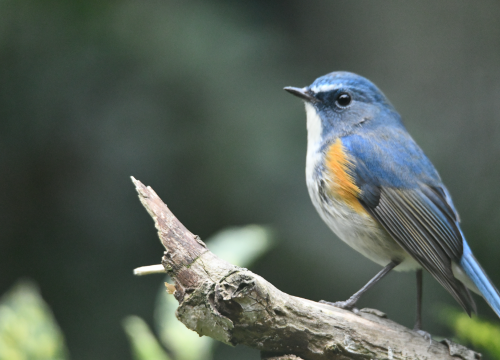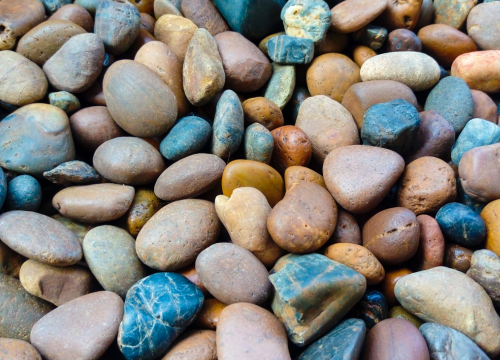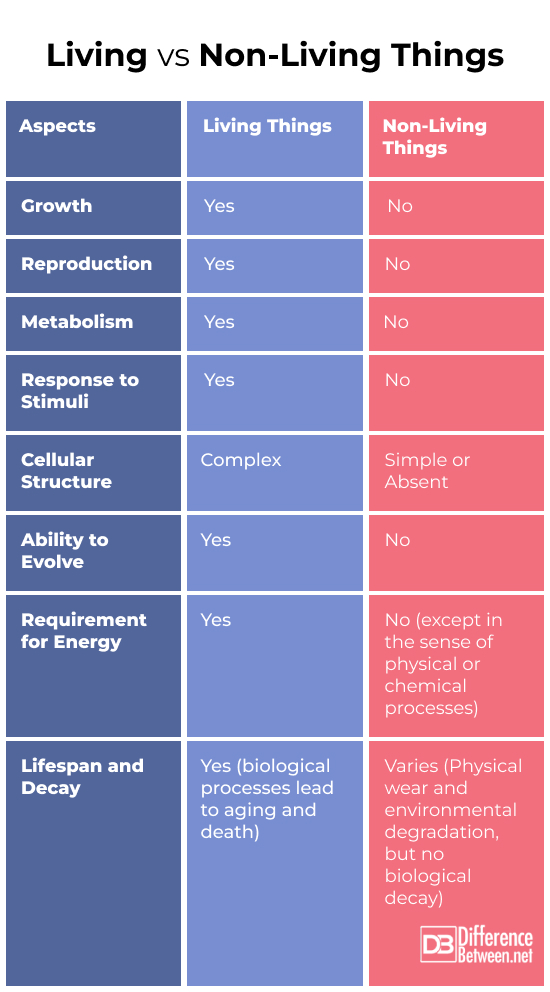
Understanding the difference between living and non-living things is a fundamental aspect of biology. This knowledge goes beyond the classroom, It helps us understand the world. It explains surroundings’ delicate ecosystem and how we play our role in it. “Why does it matter?” Because knowing the distinction between living and nonliving objects helps us responsibly manage our environment. It alters our views on sustainability, conservation, and decision ethics. Understanding these contrasts helps us appreciate life and the complicated network of relationships that keep our planet together in a world of living and non living objects. Explore this fascinating distinctions between living and non living creatures to discover concepts that may impact our worldview.

We explore the nature of life to define the unique characters that distinguish living organisms from non-living ones. Living things are characterized by having unique features such as growth, reproduction, metabolism, and responsiveness.
Growth: Living organisms simply grow, their sizes increase by using nutrients from the environment, regulating intake autonomously to support development.
Reproduction: Whether it is sexual or non-sexual, reproduction is a fundamental process for life.
Metabolism: The complex biochemical reactions necessary for energy production and forming cellular constituents.
Living things are affected by the surrounding factors whether they are chemical, physical or biological.
Examples of Living Things to Illustrate: From microscopic bacteria to towering sequoias and cognitively complex humans, We can see the huge spectrum illustrating the diversity of life. The quick reproduction and mutation of bacteria, the photosynthetic response of plants to light, and the environment-adaptive behaviors of animals are examples of this. These illustrations of Earth’s biodiversity shows the similarities and differences that run throughout the framework of life, enhancing our knowledge of biological diversity and connectivity.

Non-living things lack the unique processes of life that differentiate living from non-living things. They do not grow, reproduce, do metabolic reactions or respond to stimuli. Though, they are very important to maintain life and environmental balance.
Characteristics:
Lack of Growth: Inanimate objects do not undergo internal growth mechanisms; yet, they may alter their shapes by the effect of external physical processes like erosion or melting.
Lack of Reproduction Capacity: Non-living things do not undergo physiological reproduction processes, in contrast to live things. However, Rather than using physiological mechanisms, humans replicate or manufacture non-living objects by mechanical or chemical techniques.
Absence of Metabolism: Because they lack biological processes, non-living entities do not need energy to develop or operate, so they are not involved in metabolic activities.
Non-responsiveness: Non-living materials do not actively react to external stimuli.
Classic non-living examples things are rocks, water, and air.
Living and nonliving things take up room and have mass, which makes the world we live in look the way it does. There is a real presence to both, whether it is a tall tree or a huge mountain.
Both have an effect on their surroundings; All living things from the smallest bacteria to the biggest whales change and interact with their surroundings in many ways, such as by eating, moving around, and making trash. Things that are not alive also change the world around them. For example, rivers carve through landscapes, rocks provide cover, and buildings change the skyline and affect local ecosystems.
The main differences between living and nonliving things help us understand how complicated life is and what role things play in our surroundings. Here’s what makes them different:
Living things grow reproduce and have metabolic activities to produce energy. As cells divide and grow, organisms reproduce sexually or asexually, and their metabolism turns food into energy. In contrast, in non-living, things there is no metabolism, growth, or reproduction processes. They do not have the biological components to do these things.
Living things react to stimuli such as light, sound and warmth. They need such reactions to find food, escape danger, and breed. Things that are not alive can not respond on purpose. External physical factors, not internal biological responses, are what change an object’s state or position.
Living Things: Cells are the building blocks of life. It is possible for cells to be complex and have structures that process life. Non- living things do not have a biological structure. The building blocks of these things are simple molecules and complicated mixtures, but they do not have organized, functional units like living things do.
Things that are alive die and break down when their biological processes stop. Things that are not alive do not have organic lives. It is possible for the environment to wear them down, which is not the same as biological deterioration.
There are both constructive and destructive ways for living things to connect with their surroundings. They can change environments by their existence and doing their activities. Things that are not alive: Their physical presence and outside forces change the environment. Even though they do not have biological work, they change the environment and keep ecological balances.

It is important to tell the difference between living and nonliving things so that you can focus on the things that only living things have, like growth, reproduction, metabolism, response, and complex cellular architecture. This information isn’t just interesting for academics; it’s necessary to protect and raise understanding about the environment. It tells us how to care for the earth and shows us how important every living thing is to the ecosystem. People who understand these differences are more aware of how short life is and how important it is to protect Earth’s wildlife for future generations.
Living Things: Humans, Animals, Trees, Flowers, Birds, Fish, Insects, Bacteria, Fungi, Algae
Nonliving Things: Rocks, Water, Air, Mountains, Clouds, Buildings, Plastic, items, Furniture, Electronics, Clothes
Sharing is caring!
Email This Post : If you like this article or our site. Please spread the word. Share it with your friends/family.
Cite
APA 7
Reda, A. (2024, March 3). Difference Between Living and Non-living Things. Difference Between Similar Terms and Objects. http://www.differencebetween.net/science/difference-between-living-and-non-living-things/.
MLA 8
Reda, Ahmed. "Difference Between Living and Non-living Things." Difference Between Similar Terms and Objects, 3 March, 2024, http://www.differencebetween.net/science/difference-between-living-and-non-living-things/.
i noticed that u said “Living things can move, but non-living things cannot” but fire is not living and it can move. You stand corrected.
hahaha ate thankx po naka2long po yung cnavi niofire doesn’t move…it just keeps combusting with the oxygen particles surrounding the already burning ones though when it gets too far away from the wood or other source then it is missing one of the three things required for fire…fuel,heat and an oxidized agent(generally oxygen)
Glory Ezeogu 1.our cells stop growing THANKS FOR THESE PAGE I GOT A + ON MY TEST . great melissa!! have a nice day Non-living things can be moved by external force.. Plant don’t move, so with this statement we can say they are non-living….. Lol lol plants doesn’t move because there is no wind too make them yes plants move toward the stimuli it can either move towards or away from gravity or light …the movement of plants are restricted to their parts…. well non living means it never lived or it never was anything and has no cells at allfire can move but is not a living things, because it does not hve all seven characteristics of living things
jasbeer singh Oh! dumbo common sense is there WHAT IS THE DIFERRENT BETWEEN LIVING THINGS AND NON LIVINNG THINGSNonliving organisms don’t eat, poop,have babies, grow, have senses(touch,smell,sight,taste,hear), breathe or move (though they can be moved by other things. E.g. water,blood.)
some kid from da skewl i hate apples >:( Shehzad khan That is why bhatsadhanaannapurnaThanks for your teaching about living and non living things. I have a doubt: I sorted first the flower-vase in the non livings .in the checking means : it is objected. then I kept it in livings. even then it is once again objected. let me know the real answer .
rina zhang The information was very helpful! sorry speeld hate wrong =)just cut to the point and yes this is your sci teacher and I give it a F- for failuer i’m calling the police =(.
i haet you beach ahhhhhhhhhhhhhhhhhhhhhhhh! creepy picture haaaaaaaaaaaaaaaaaaaaaaaSo, when science and biology say they have created life from non-living matter, does that mean the same as, they have created life from nothing?
Because that seems like a lie… non-living matter is still exsisting matter. They can never create life or non living matter from nothing right? Only God can do that! why do scientists lie and deceive in order to promote their beliefs? Noone can create life or non living matter from nothing. They always have to use exsisting matter. end of story!
“Energy is required by living things, while non-livings do not require energy.” what about electronic appliances, in order to work properly they require energy right? Be more specific.
thanx alot Thanks a lot for information now I can make my project Cess Villagracia khalil Ahmed i want to know what is the properties of living and non living things Some non-living things can grow such as crystals. MY Name Jeff Thanks! This really helped. 🙂 Viruses are non-living and have many characteristics of a living thing.people are living but they can not grow when they reach adulthood. They cant get bigger or anything anymore.
1.our cells stop multiplyingNon-living becomes living,living organisams are created from non-living organisams,example:our human body consists of lot of minerals and protein,they all came from earth,non-living needs more time to became a living cell(this only happening after our death,if all living destroyed,it takes billions and billions of year to became a single cell created from the earth through the help of all non-living organisams,as same as diamond creation if human body decays and became carbon it needs billions and billions of years to become diamond crystal,same for non-living carbon to became living it’s the beauty of our nature,if we change(destroy) our nature we also destroyed
It is really good. .. William SimmonsI find that science is basically saying ….that life can come from death when it implies that life can come from non living things …..all that says is after death we are non living …….and life can come from non living matter ….
thanks for the solution Fire is living or non-living thing. Clement benquit Iam really enjoyed, very nice math.On the summary its not that good all it is telling you is what living things can do that non-living things cannot it needs more detail in it so that it has more texual information.
Okay guys tell meUsing the concept of build-up and disintegration differentiate living things from non-living things
Pls someone should answer this
Written by : Ahmed Reda. and updated on 2024, March 3
[0]Legaspi, B., & Straits, W. (2011). Living or Nonliving?. Science and Children, 48(8), 27.
[1]Funnell, E., & Sheridan, J. (1992). Categories of knowledge? Unfamiliar aspects of living and nonliving things. Cognitive Neuropsychology, 9(2), 135-153.
[2]Legaspi, B., & Straits, W. (2011). Living or Nonliving?. Science and Children, 48(8), 27.
[3]Legaspi, B., & Straits, W. (2011). Living or Nonliving?. Science and Children, 48(8), 27.
[4]Legaspi, B., & Straits, W. (2011). Living or Nonliving?. Science and Children, 48(8), 27.
[5]Funnell, E., & Sheridan, J. (1992). Categories of knowledge? Unfamiliar aspects of living and nonliving things. Cognitive Neuropsychology, 9(2), 135-153.
[6]Funnell, E., & Sheridan, J. (1992). Categories of knowledge? Unfamiliar aspects of living and nonliving things. Cognitive Neuropsychology, 9(2), 135-153.
[7]Funnell, E., & Sheridan, J. (1992). Categories of knowledge? Unfamiliar aspects of living and nonliving things. Cognitive Neuropsychology, 9(2), 135-153.
[8]Funnell, E., & Sheridan, J. (1992). Categories of knowledge? Unfamiliar aspects of living and nonliving things. Cognitive Neuropsychology, 9(2), 135-153.
[9]Funnell, E., & Sheridan, J. (1992). Categories of knowledge? Unfamiliar aspects of living and nonliving things. Cognitive Neuropsychology, 9(2), 135-153.
[10]Image credit: https://www.canva.com/photos/MADL5Jkuyq0-a-living-thing/
[11]Image credit: https://www.canva.com/photos/MADCEe3J1ik-river-rock/
Articles on DifferenceBetween.net are general information, and are not intended to substitute for professional advice. The information is "AS IS", "WITH ALL FAULTS". User assumes all risk of use, damage, or injury. You agree that we have no liability for any damages.
See more about : animals, plants